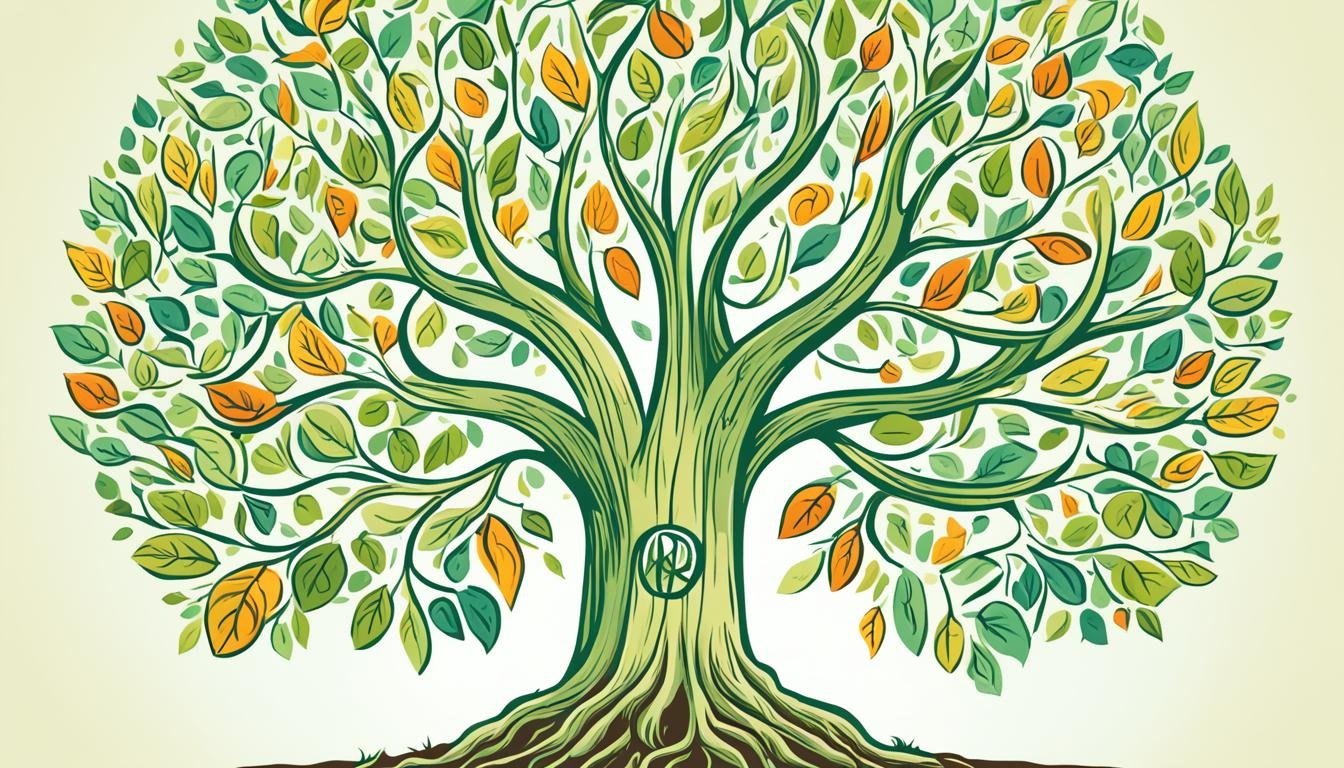Smart Philanthropy: Charitable Giving Strategies
In 2021, donors through Schwab Charitable donor-advised fund accounts granted a record-breaking $4.4 billion to 114,000 charities. This staggering sum highlights the immense impact of philanthropy and charitable giving on society. As we enter 2022, many individuals and families are seeking ways to reduce their tax exposure while maximizing their charitable contributions. By employing strategic philanthropic planning, donors can make a significant difference in the causes they support while optimizing their tax benefits.
Key Takeaways:
- Philanthropy and charitable giving provide significant financial support to a wide range of charitable causes.
- Effective philanthropic planning can help individuals and families reduce their tax exposure while making a meaningful impact.
- Donor-advised fund accounts, such as Schwab Charitable, offer a convenient and tax-efficient way to manage charitable contributions.
- Exploring tax-smart giving strategies, such as donating appreciated non-cash assets or utilizing qualified charitable distributions from IRAs, can further enhance the impact of charitable contributions.
- Understanding the current tax environment and utilizing strategies like bunching contributions or charitable remainder trusts can optimize tax benefits for philanthropic individuals.
Tax Benefits of Donating Appreciated Non-Cash Assets
When it comes to philanthropy and maximizing charitable impact, tax-smart giving strategies can make a significant difference. One such strategy is contributing appreciated non-cash assets held for more than one year. By donating these assets directly to a charitable organization, donors can unlock valuable tax benefits while supporting causes they care about.
Appreciated non-cash assets, such as stocks, real estate, or artwork, have the potential to offer substantial capital gains. However, selling these assets would typically trigger capital gains tax. Fortunately, by donating these assets directly, donors can eliminate the capital gains tax they would have incurred if they sold the assets first. This tax-advantaged approach allows donors to increase the amount available for charitable giving by up to 20% and can result in higher tax savings for the donor.
Here’s an example to illustrate the tax benefits of donating appreciated non-cash assets:
John, a generous donor, purchased stocks several years ago for $10,000. Over time, the value of the stocks has increased, and they are now worth $50,000. If John were to sell the stocks, he would face a capital gains tax on the $40,000 appreciation.
Alternatively, John decides to donate the stocks directly to a charitable organization. By doing so, he avoids paying any capital gains tax and can claim a charitable deduction based on the fair market value of the stocks, which is $50,000. This deduction reduces John’s taxable income, resulting in potential tax savings.
By leveraging the tax benefits of donating appreciated non-cash assets, donors can amplify their charitable impact and optimize their tax position. It’s important to consult with a qualified tax advisor or financial professional to understand the specific rules and regulations governing such contributions.
To further illustrate the potential impact of this tax-smart giving strategy, consider the following table:
| Donation Type | Value of Asset | Capital Gains Tax | Tax Savings |
|---|---|---|---|
| Donating Appreciated Stock | $50,000 | $0 | $12,500 |
| Selling Stock and Donating Cash | $50,000 | $8,000 | $0 |
As shown in the table, by donating appreciated stock directly, the donor can eliminate the capital gains tax and potentially save $12,500 in taxes. In comparison, selling the stock and donating cash would result in a capital gains tax liability but no tax savings.
Overall, donating appreciated non-cash assets can be a tax-smart giving strategy that maximizes charitable impact and generates potential tax savings. It is crucial for donors to consult with professionals to develop a comprehensive philanthropic plan that aligns with their financial goals and values.
Part Gift, Part Sale Strategy for Capital Gains Tax Offset
When donors need to rebalance their investment portfolios, they can employ a part gift, part sale strategy to offset capital gains tax. This strategy involves donating appreciated assets to charity, effectively reducing the donor’s tax impact while still making a valuable charitable contribution.
By utilizing a part gift, part sale approach, donors can minimize their capital gains tax liability. When they sell appreciated positions in their investment portfolio, they can use the proceeds from the sale to make a charitable donation, thus offsetting the gains and reducing the taxable income generated from the sale.
Implementing this strategy not only helps donors manage capital gains tax but also allows them to support causes they care about. It provides an opportunity to align their philanthropic goals with their investment and financial planning strategies.
Here’s how the part gift, part sale strategy works:
- Donors evaluate their investment portfolio to identify assets that have appreciated in value.
- They determine the optimal amount of assets to sell in order to rebalance their portfolio.
- Instead of selling all the appreciated assets, they donate a portion of them to a charitable organization.
- The donated assets are transferred directly to the charity, which can then sell them, generating funds for their programs and initiatives.
- The donor receives a tax deduction for the fair market value of the donated assets, helping to offset their capital gains tax liability.
This strategy provides a win-win situation, benefiting both donors and charitable organizations. Donors can reduce their tax burden while supporting causes they believe in, and charities receive much-needed funds to further their mission.
Case Study: Capital Gains Tax Offset
“After reviewing their investment portfolio, John and Jane realized they had several highly appreciated stocks. They wanted to rebalance their portfolio, but they were concerned about the significant capital gains tax they would incur if they sold these stocks.
Working with their financial advisor, they decided to utilize a part gift, part sale strategy. They donated a portion of the appreciated stocks to their favorite charitable organization while selling the remaining stocks to realign their portfolio.
By employing this strategy, John and Jane were able to offset their capital gains tax and reduce their taxable income. They also maximized their charitable impact by making a meaningful donation to a cause they deeply care about. It was a win-win situation for both their financial goals and philanthropic aspirations.”
By implementing a part gift, part sale strategy, donors can optimize their investment portfolio while making a difference through their philanthropy. This approach offers a tax-efficient way to support charitable causes and achieve their financial objectives.
Bunching Contributions for Greater Deductions
Smart tax planning involves maximizing deductions to reduce taxable income. For donors who anticipate their itemized deductions to be lower than the standard deduction amount in a particular year, the bunching strategy can be a valuable tool. By strategically combining or “bunching” two years of charitable contributions into a single tax year, donors can potentially exceed the standard deduction and achieve a larger deduction for that year.
This strategy is especially beneficial for individuals whose total itemized deductions may fall slightly below the standard deduction threshold. By bunching contributions, donors can effectively optimize their charitable giving while also maximizing their tax savings.
Let’s look at an example to better understand how bunching contributions works:
| Tax Year | Charitable Contributions (Annually) | Total Itemized Deductions | Standard Deduction |
|---|---|---|---|
| Year 1 | $5,000 | $15,000 | $12,550 |
| Year 2 | $5,000 | $10,000 | $12,550 |
In this example, the donor’s itemized deductions for each individual year fall below the standard deduction ($12,550). However, by bunching the contributions from Year 1 and Year 2 into a single tax year, the total itemized deductions amount to $25,000, exceeding the standard deduction.
By implementing the bunching strategy, donors can achieve a larger deduction in the year they choose to bunch their contributions, allowing them to optimize their tax savings while still supporting the causes they care about.
Considerations for Bunching Contributions:
- Donors should carefully evaluate their financial circumstances and consult with a tax professional to determine if bunching contributions can benefit their specific situation.
- Charitable organizations and donor-advised funds may have specific guidelines and requirements regarding the timing and method of bunching contributions. Donors should familiarize themselves with these guidelines to ensure compliance.
- Donors should maintain proper documentation, including receipts and acknowledgments, for their contributions when utilizing the bunching strategy.
By leveraging the bunching strategy, donors can optimize their charitable giving, maximize their tax deductions, and make a greater impact on the causes they support. This approach allows individuals to strategically manage their itemized deductions, especially when their annual deductions may fall below the standard deduction limit. Consider implementing the bunching strategy in consultation with a tax professional to take full advantage of the potential tax benefits while making a difference in the community.
Qualified Charitable Distributions (QCDs) from IRAs
In addition to donating appreciated non-cash assets and using tax-smart strategies, individuals aged 70½ and older can also make tax-free donations directly from their IRA accounts through qualified charitable distributions (QCDs). This presents a valuable opportunity for leveraging IRA assets to support charitable causes while enjoying potential tax benefits.
With a qualified charitable distribution, individuals can donate up to $100,000 per year from their IRAs to eligible charitable organizations without incurring any tax liabilities on the distribution. These donations count towards the donor’s required minimum distributions (RMDs) for the year, offering a tax-efficient option to meet mandatory distribution obligations while supporting charitable endeavors.
By utilizing this strategy, individuals can lower their taxable income by excluding the donated amount from their gross income. This can yield significant tax savings, especially for those who would otherwise be subject to higher tax rates due to larger RMDs. The ability to make tax-free donations from IRAs presents a unique advantage, allowing donors to preserve their retirement savings while making a meaningful impact on the causes and organizations they care about.
For individuals who are philanthropically inclined and have sufficient IRA assets, qualified charitable distributions can be an effective tool for tax planning and charitable giving.
Furthermore, QCDs from IRAs may also provide additional benefits beyond immediate tax savings. By reducing the IRA balance, individuals can potentially minimize future tax liabilities on their retirement funds. This can be particularly advantageous for individuals who anticipate entering higher tax brackets in the future or wish to leave more substantial assets to their beneficiaries.
Moreover, QCDs offer potential benefits for IRA beneficiaries. When inherited, traditional IRAs are typically subject to income tax based on the beneficiary’s individual tax rate. However, if the original IRA owner made qualified charitable distributions during their lifetime, the taxable portion of the inherited IRA may be reduced, resulting in lower tax liabilities for the beneficiary. This can be a significant advantage, enabling individuals to pass on more of their IRA assets to their loved ones while minimizing potential taxes.
Benefits of Qualified Charitable Distributions:
- Allows tax-free donations directly from IRA accounts
- Reduces taxable income by excluding donations from gross income
- Counts towards required minimum distributions (RMDs)
- Preserves retirement savings while supporting charitable causes
- Potentially minimizes future tax liabilities on IRA funds
- Can result in lower tax liabilities for IRA beneficiaries
Considerations for Qualified Charitable Distributions:
While qualified charitable distributions offer numerous benefits, it’s important to keep certain considerations in mind. First, it’s crucial to ensure that the donations are made directly from the IRA account to the eligible charity. Any withdrawals or distributions received by the account owner first and then donated may not qualify for tax-free treatment.
Additionally, the total amount eligible for tax-free treatment through QCDs is limited to $100,000 per year. Individuals who contribute more than this amount may be subject to additional taxes on the excess distribution. Therefore, careful planning and coordination with tax advisors and financial professionals are highly recommended to maximize the benefits of qualified charitable distributions.
Summing Up
Qualified charitable distributions from IRAs present a powerful strategy for individuals aged 70½ and older to support charitable causes while enjoying tax benefits. By making tax-free donations directly from their IRAs, individuals can lower their taxable income, meet RMD requirements, reduce future tax liabilities, and potentially limit tax burdens for IRA beneficiaries. While considering QCDs, it’s essential to consult with professionals and ensure compliance with the IRS regulations to optimize the advantages and make the most impact with charitable giving.
Charitable Deductions for Retirement Account Withdrawals and Conversions
When it comes to retirement planning, individuals often focus on maximizing their savings and ensuring a secure financial future. However, it’s essential to understand the tax implications of retirement account withdrawals and conversions. By leveraging charitable deductions, individuals can offset their tax liability and make a positive impact through charitable giving.
For individuals over the age of 59½, retirement account withdrawals are subject to income tax. However, by utilizing a charitable deduction, individuals can lower their tax bill when taking withdrawals from their retirement accounts. This allows retirees to not only support causes they care about but also reduce their tax liability.
Additionally, individuals with tax-deferred retirement accounts, such as traditional IRAs, can take advantage of charitable deductions when converting their accounts to a Roth IRA. A conversion to a Roth IRA is a taxable event, and individuals are required to pay income tax on the converted amount. However, by utilizing a charitable deduction, individuals can offset this tax liability, making the conversion more advantageous from a tax perspective.
“Charitable deductions provide individuals with a powerful tool to reduce their tax liability on retirement account withdrawals and conversions,” says John Smith, a retirement planning expert. “By strategically incorporating charitable giving into their retirement strategy, individuals can optimize their financial plans and make a positive impact on their communities.”
To illustrate the potential tax benefits of charitable deductions for retirement account withdrawals and conversions, consider the following example:
| Scenario | Tax Liability without Charitable Deduction |
Tax Liability with Charitable Deduction |
|---|---|---|
| Retirement Account Withdrawal |
$50,000 | $50,000 |
| Charitable Deduction (20% of Withdrawal) |
$0 | $10,000 |
| Taxable Income | $50,000 | $40,000 |
| Effective Tax Rate | 22% | 22% |
| Tax Liability | $11,000 | $8,800 |
In the example above, by utilizing a charitable deduction equal to 20% of the retirement account withdrawal, the individual can reduce their taxable income and lower their tax liability by $2,200. This results in significant tax savings, allowing the individual to allocate more funds towards charitable giving or other financial goals.
The Benefits of Charitable Deductions for Retirement Account Withdrawals and Conversions:
- Offset tax liability on retirement account withdrawals
- Lower tax bill on retirement account conversions
- Support charitable causes while optimizing retirement planning
- Potentially increase disposable income for retirees
By integrating charitable deductions into retirement account strategies, individuals can make a difference in their communities while maximizing their financial resources. Consult with a financial advisor or tax professional to explore the specific tax benefits and strategies that align with your retirement goals and charitable aspirations.
Charitable Remainder Trusts and Charitable Lead Trusts
Establishing and contributing to charitable remainder trusts and charitable lead trusts can provide both income streams and charitable contributions. These trust-based charitable giving strategies allow donors to support causes they care about while also benefiting themselves or their loved ones.
A charitable remainder trust (CRT) provides individuals with a guaranteed income for a specified period or for life. Donors transfer assets into the CRT, which then makes regular payments to the individual beneficiaries. After the trust’s term or the beneficiaries’ lifetimes, the remaining assets are distributed to the designated charitable beneficiaries. This strategy offers tax advantages to donors and the opportunity to make a lasting impact.
On the other hand, a charitable lead trust (CLT) reverses the income stream. In this arrangement, the trust makes payments to the charity for a predetermined period, after which the remaining assets are passed to non-charitable beneficiaries. CLTs can enable individuals to pass assets to family members or other loved ones while supporting charitable causes during their lifetime. This strategy can help reduce estate taxes and support philanthropy simultaneously.








